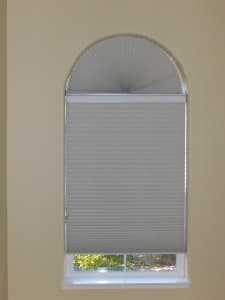Cord Loops break. It is just a fact.
If you have continuous cord loops, eventually they will need to be changed. The good news is that it is one of the easiest repairs you can do to a window covering. The attached video shows you the process. I purposely chose the simplest repair possible to show the ease of replacement.

Older shade with continuous cord loop
If your shade has an end cap over the clutch, like with Hunter Douglas products, you will have to remove the end cap first. This can be done with the removal of a couple of screws, or by gently prying off the end cap by hand or with a flat edge prying device, like a flathead screwdriver. Whatever you do, if you are taking off an end cap, please be careful. Some of the older products have end caps that are almost impossible to remove and replace without breaking the fragile tabs that hold them on. Then you are forced to glue them back on or find a replacement part.
If I had my way, I’d insist that end caps be made of metal, or secured by removable screws, allowing easy access. Some cordloop mechanisms are self contained and the clutch and cord are replaced all together. In this case, you have to carefully remove the entire end cap assembly while making sure not to remove the shade portion from the opposite end cap. Then you replace the clutch and cord loop. If you are mechanically inclined, these are easy to do. You will need to know the drop of the cord loop. This means that you need to measure from the headrail to where the cord normally attaches to the bottom of the loop by means of a cord tensioner unit. This measurement is the length of the cord loop. It is usually measured in increments of 6″. So, you would let your window fashions expert know the size. You would say, “I need cord loops for “type of shade” from “this company” in a cord length of ’36″/60’/54″‘. This is the information that will help you get the right replacement part. If this has been confusing, then let a professional handle it for you. There might be a charge, but you will know it is being done correctly the first time.
